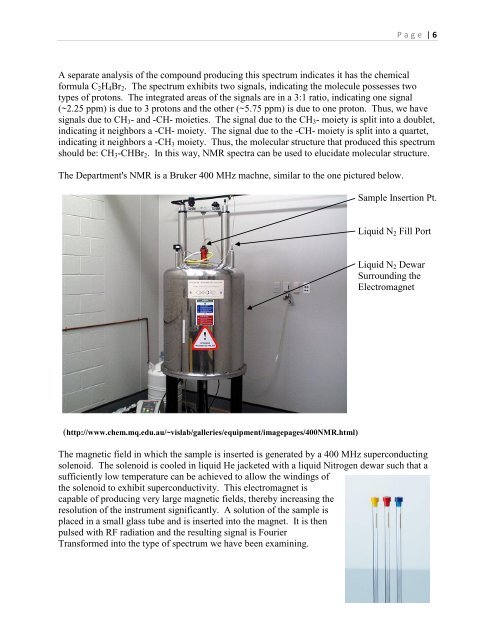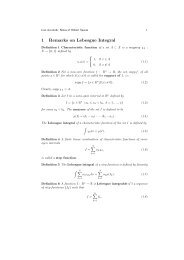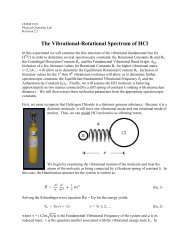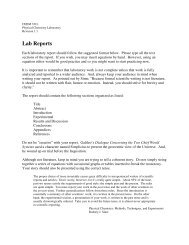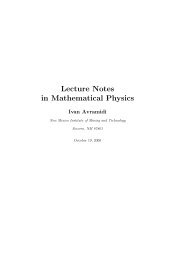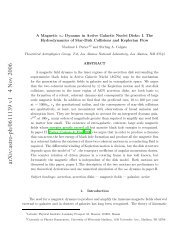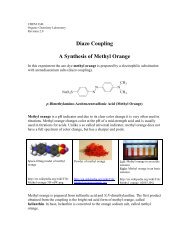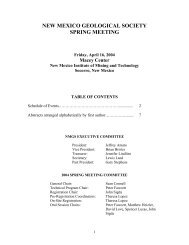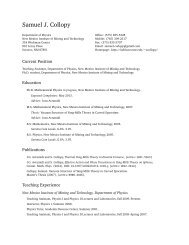Proton Nuclear Magnetic Resonance Spectroscopy
Proton Nuclear Magnetic Resonance Spectroscopy
Proton Nuclear Magnetic Resonance Spectroscopy
You also want an ePaper? Increase the reach of your titles
YUMPU automatically turns print PDFs into web optimized ePapers that Google loves.
P a g e | 6A separate analysis of the compound producing this spectrum indicates it has the chemicalformula C 2 H 4 Br 2 . The spectrum exhibits two signals, indicating the molecule possesses twotypes of protons. The integrated areas of the signals are in a 3:1 ratio, indicating one signal(~2.25 ppm) is due to 3 protons and the other (~5.75 ppm) is due to one proton. Thus, we havesignals due to CH 3 - and -CH- moieties. The signal due to the CH 3 - moiety is split into a doublet,indicating it neighbors a -CH- moiety. The signal due to the -CH- moiety is split into a quartet,indicating it neighbors a -CH 3 moiety. Thus, the molecular structure that produced this spectrumshould be: CH 3 -CHBr 2 . In this way, NMR spectra can be used to elucidate molecular structure.The Department's NMR is a Bruker 400 MHz machne, similar to the one pictured below.Sample Insertion Pt.Liquid N 2 Fill PortLiquid N 2 DewarSurrounding theElectromagnet(http://www.chem.mq.edu.au/~vislab/galleries/equipment/imagepages/400NMR.html)The magnetic field in which the sample is inserted is generated by a 400 MHz superconductingsolenoid. The solenoid is cooled in liquid He jacketed with a liquid Nitrogen dewar such that asufficiently low temperature can be achieved to allow the windings ofthe solenoid to exhibit superconductivity. This electromagnet iscapable of producing very large magnetic fields, thereby increasing theresolution of the instrument significantly. A solution of the sample isplaced in a small glass tube and is inserted into the magnet. It is thenpulsed with RF radiation and the resulting signal is FourierTransformed into the type of spectrum we have been examining.


